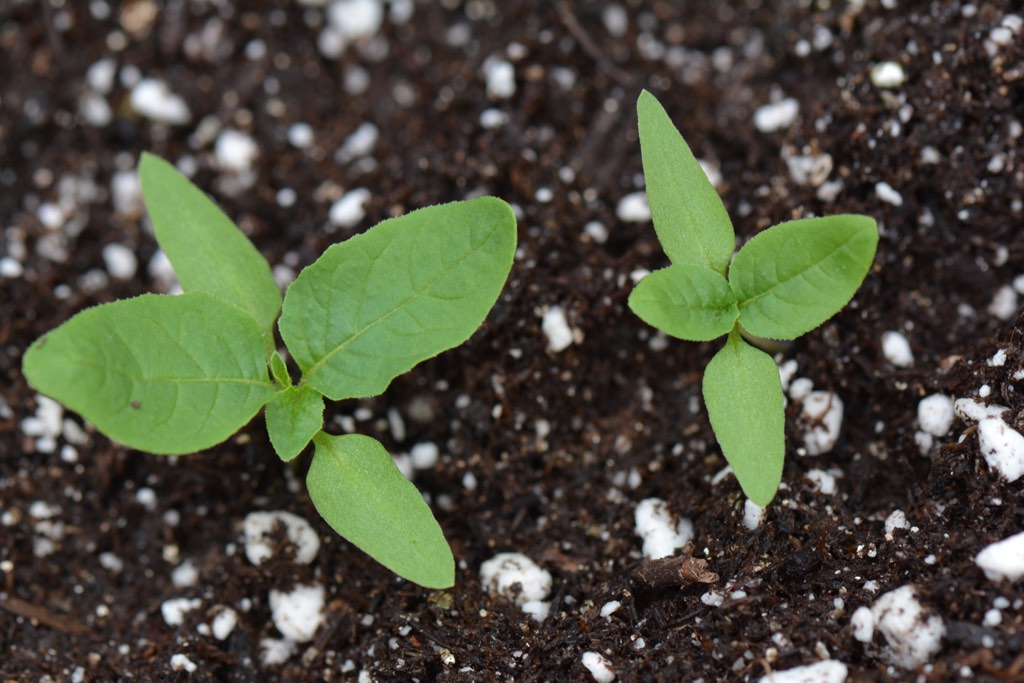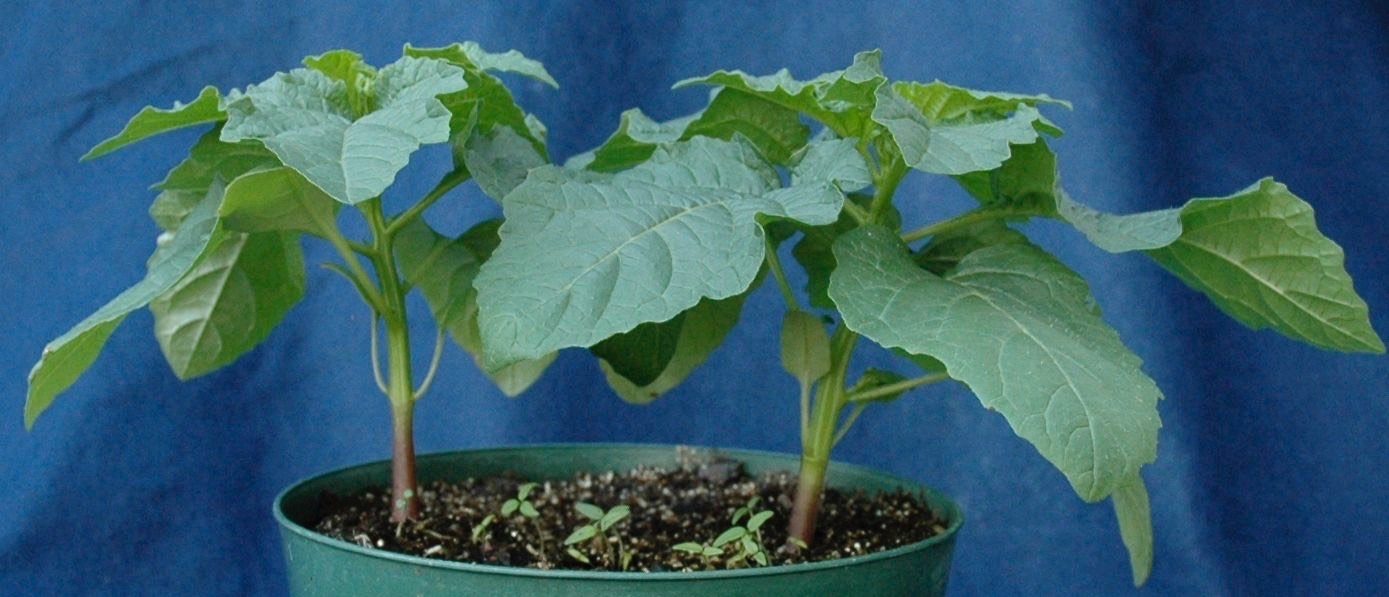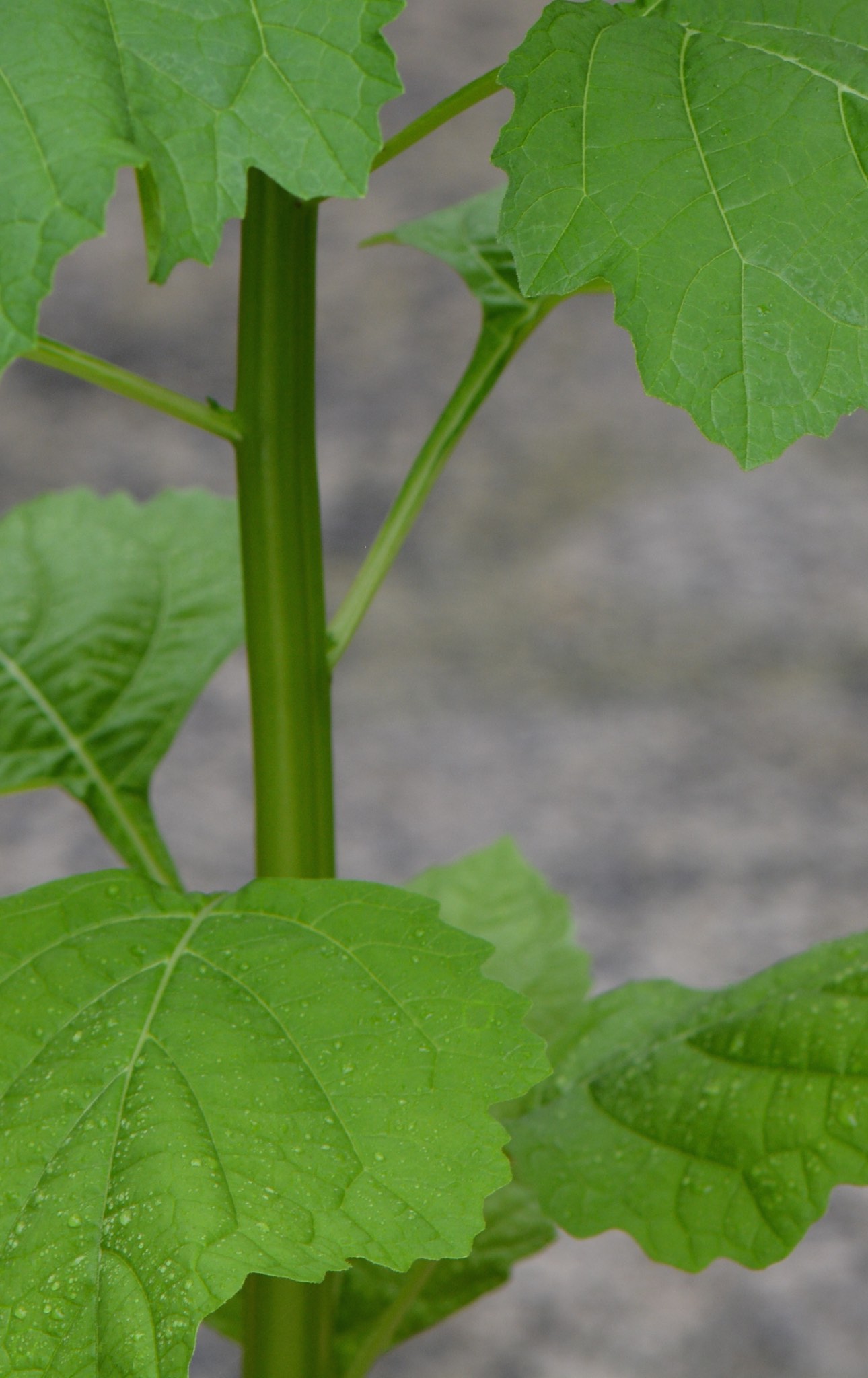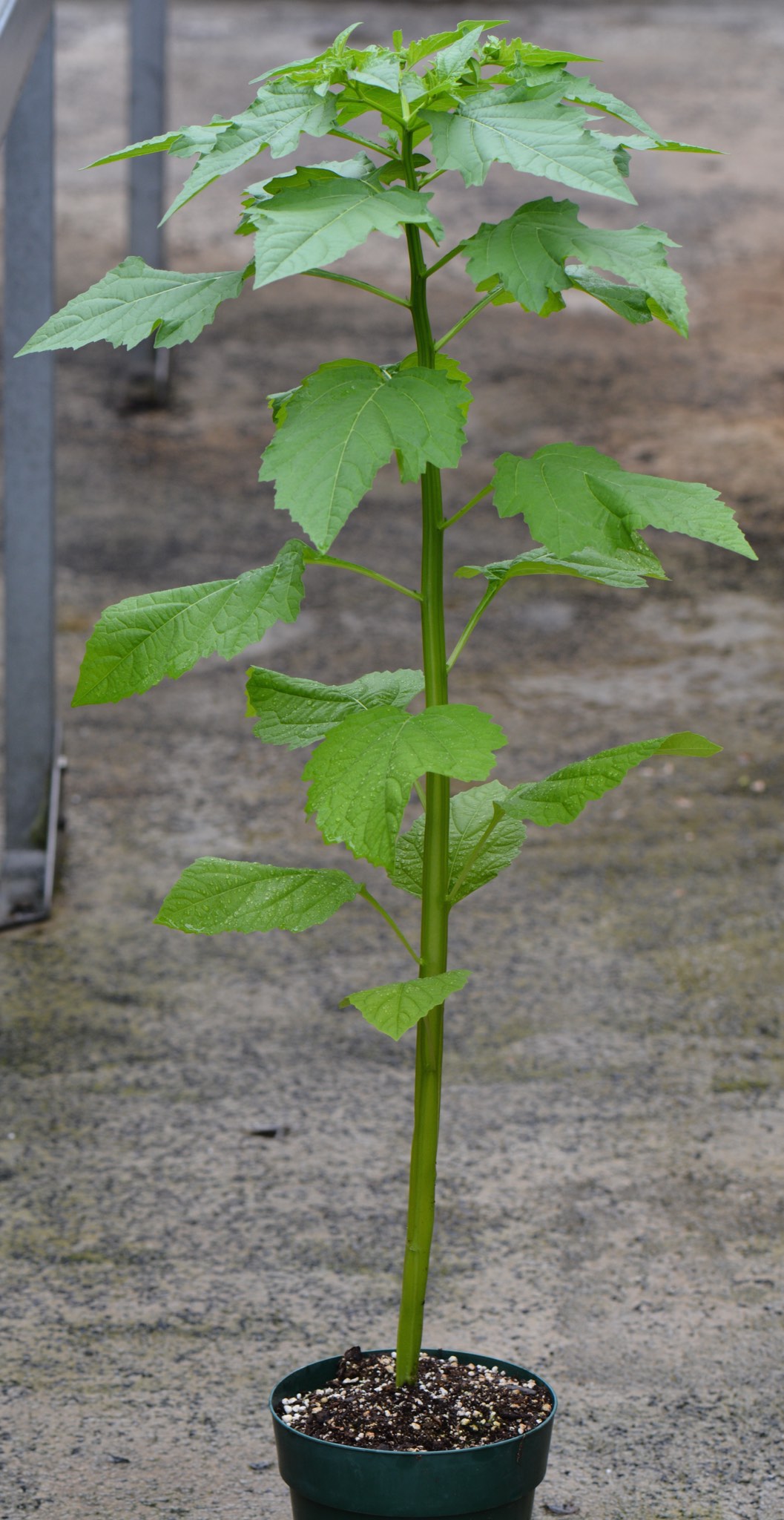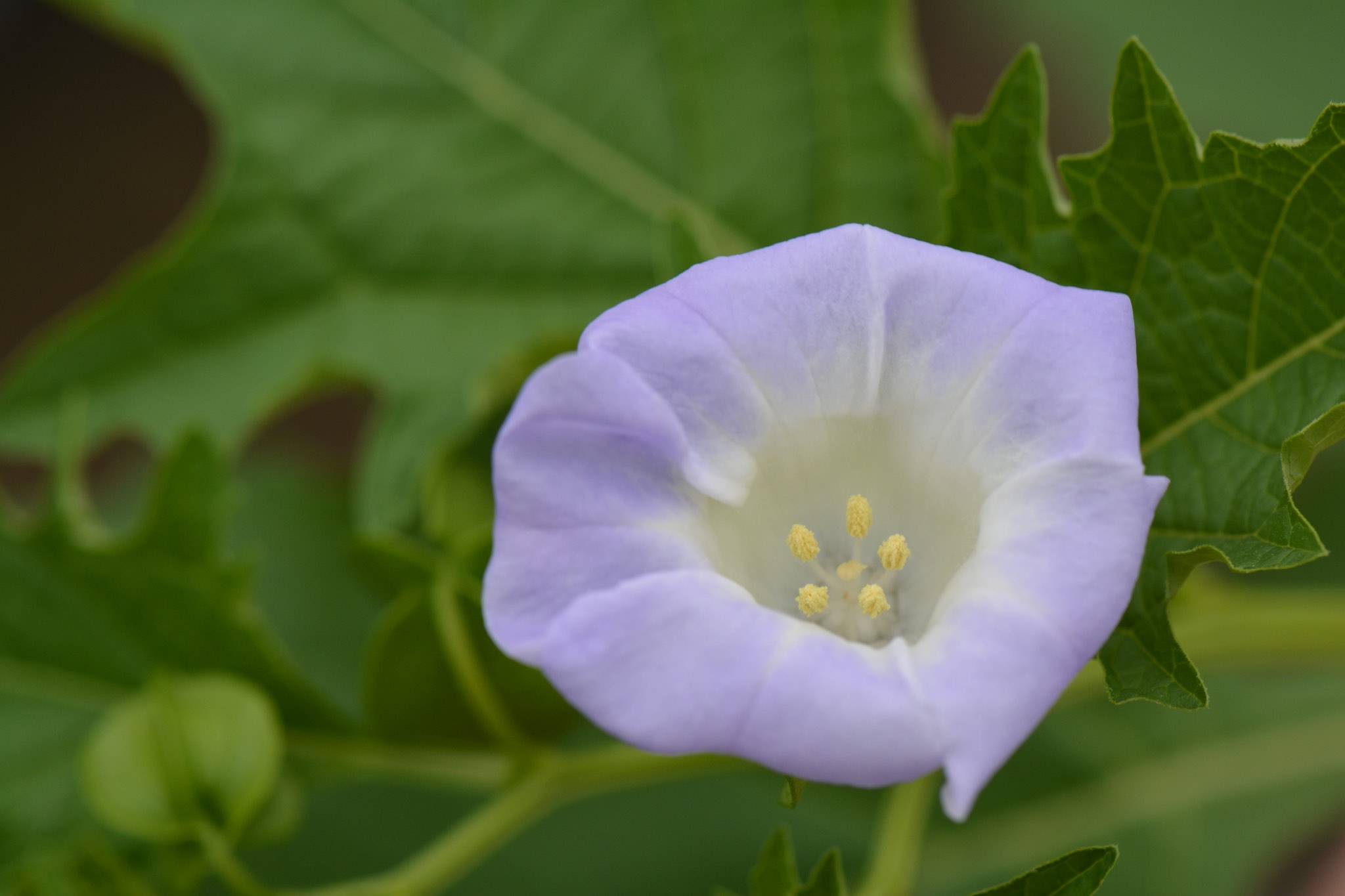Ohio’s Noxious Weeds
Apple of Peru
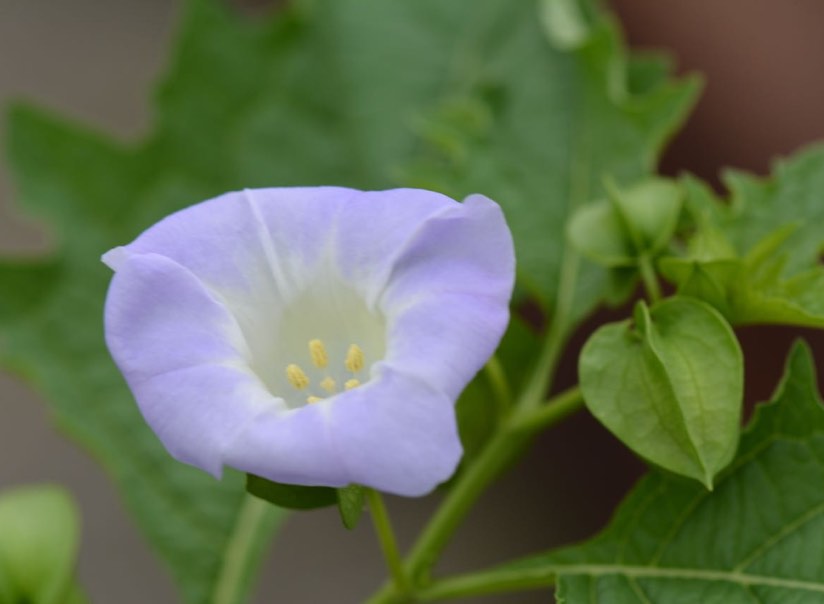
Nicandra physalodes, apple of Peru
Family: Nightshade, Solanaceae.
Habitat: Habitats include areas adjacent to flower gardens, areas along roadside ditches, cropland, and fallow fields. This species is occasionally cultivated in flower gardens because of the moderately attractive flowers. It prefers disturbed areas.
Life cycle: Summer annual.
Growth habit: 2-5 ft tall.
Leaves: Alternate leaves are up to 8″ long and 4″ across (excluding the petioles). They are ovate-cordate and sparsely pubescent. Their margins are shallowly lobed, bluntly dentate, or undulate.
Stem: Five angled (pentagon) hollow stem, spreading branches.
Flower: Trumpet-shaped lavender flowers that may occasionally be white, 5 cm or more across, and are produced from July to September.
Roots: Fibrous root system.
Similar Plants: The foliage of the Apple of Peru, or Shoofly, plant resembles an oversized Ground Cherry, but its flowers are quite different.
The Problem is……………Apple of Peru germinates continuously (spring, summer, and fall) in agricultural fields if moisture is available. It has low sensitivity to most commonly used herbicides. Poor control results in heavy infestations because it is a prolific seed producer. Large, persistent seed banks quickly accumulate in the soil due to seed dormancy. Very competitive with soybean and vegetable crops. Also confirmed alternative host for cucumber mosaic virus.

